Today’s Current Affairs: 29th December 2022 for UPSC IAS exams, State PSC exams, SSC CGL, State SSC, RRB, Railways, Banking Exam & IBPS, etc
Table of Contents
National Mobile Monitoring System : MGNREGA
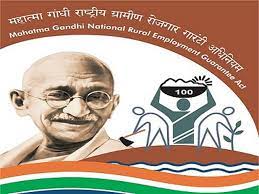
Digitally capturing the attendance of workers employed under the Mahatma Gandhi National Rural Employment Guarantee Scheme (MGREGS) through NMMS has been made universal by the Centre from January 1, 2023.
- Any worksite having 20 or more workers under MGREGS are to compulsorily mark the attendance through NMMS
- The NMMS App was launched by the Minister of Rural Development on May 21 2021.
- This app is aimed at bringing more transparency and ensuring proper monitoring of the schemes.
- It permits taking real-time attendance of workers at Mahatma Gandhi NREGA worksites along with a geo-tagged photograph.
- The app helps in increasing citizen oversight of the programme.
- The App is applicable for the Mahatma Gandhi NREGA workers for all the States/ Union Territories.
e-HRMS 2.0 Portal:
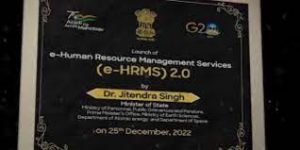
Government (Department of Personnel and Training) launched revamped probity portal and e-HRMS 2.0 portal for central government employees.
- Previously, employees could avail of limited Human Resources Services and were not connected with other HR applications.
- Now with the revamped portal, employees will get end-to-end HR services and save time and money on the management of human resources of the central government
Dhanu Yatra:
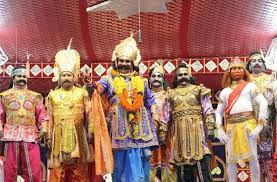
The ‘Dhanu Yatra’ festival, considered to be the world’s largest open-air theatre, has commenced recently in the Western Odisha town of Bargarh.
- Dhanu Yatra: The plays in the festival start with the dethroning of Emperor Ugrasen of Mathura by angry Kansa over the marriage of his sister Devaki with Vasudev.
- The festival will conclude with the death of demon king Kansa and the restoration of the throne to Ugrasen
- With the commencement of the festival, Bargarh becomes King Kansa’s Mathura, and Amapali, located about eight km away, becomes Gopapura, where Lord Krishna is said to have spent his childhood.
- The Jeera River which flows between the two places becomes the Yamuna River.
CAG Audit Report On Assam’s NRC:
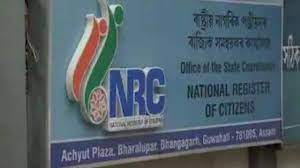
The Comptroller and Auditor General of India (CAG) has detected large-scale anomalies in the updating of the National Register of Citizens (NRC) in Assam.
- At the time, the process to update the NRC was started in December 2014 with a deadline for completion in February 2015 and the project cost was pegged at Rs. 288.18 crores.
- There was, however, a five-fold increase in the cost by March 2022 due to additional time to complete it and changes in the update software.
- As for irregularities, the CAG found that the number of wages paid to the outsourced staff was 45.59%-64.27% less than what was approved by the NRC coordination committee.
- In the NRC update process, a highly secure and reliable software was required to be developed, however, lack of proper planning was observed in this regard to the extent of 215 software utilities were added in a haphazard manner to the core software.
CAG Recommended:
- The country’s top auditor sought penal measures against Wipro Limited for violating the provisions of the Minimum Wages Act, 1948 and for paying data operators less than minimum wages.
- Information technology firm Wipro Limited was entrusted with one of the prime software installation companies by the NRC Directorate.
- Secondly, the report recommended action against the State Coordinator of National Registration (SCNR) for “excess, irregular and inadmissible payments”.
- The CAG also recommended fixing accountability of the SCNR as the principal employer for “not ensuring compliance with the Minimum Wage Act”.
NRC Exercise:
- It contains demographic information on all legal Indian citizens, allowing illegal immigrants to be recognised and deported.
- It is mandated under a 2003 amendment to the Citizenship Act of 1955, which specifies the criteria under which a person obtains Indian citizenship.
- Until now, such a database has only been maintained for Assam. However, India’s Home Minister recently stated that the register would be expanded to include the entire country.
- An NRC was first created in 1951 in Assam to identify those born in India and migrants from erstwhile East Pakistan, now Bangladesh.
- In 2013, the Supreme Court issued directions to the Centre and State to initiate an exercise in Assam to update the 1951 register.
- The order was based on a petition filed by an NGO named Assam Public Works.
- The first draft was released in 2018.
- The final list, published in 2019, included those who could establish their Indian citizenship by being residents or descendants of people living in Assam before March 25, 1971,the cut-off date for deportation of foreigners as per the Assam Accord of August 1985
Pralay Missile:

The Ministry of Defense has procured indigenous Short-Range Ballistic Surface-to-Surface (SRBM) Missile Pralay, giving Indian military the heft to its war-fighting capabilities.
- Pralay’ is India’s first conventional quasi-ballistic missile and is an answer to any conventional missile attack from northern or western borders.
- A quasi-ballistic missile has a low trajectory, and while it is largely ballistic, it can maneuver in flight.
- Ballistic missiles are initially powered by a rocket or series of rockets in stages, but then follow an unpowered trajectory that arches upwards before descending to reach its intended target at high speed.
- The missile has been developed in a way that it is able to defeat the interceptor missiles and also has the ability to change its path after covering a certain range mid-air.
- It is powered with a solid propellant rocket motor and many new technologies.
- The missile guidance system includes state-of-the-art navigation system and integrated avionics.
- It can be compared to China’s Dong Feng 12 and the Russian Iskander missile that has been used in the ongoing war with Ukraine.
- It is capable of carrying a conventional warhead of about 350 kg to 700 kg, which gives it a deadly punitive capability.
- It can carry a high explosive preformed fragmentation warhead, penetration-cum-blast (PCB) and runaway denial penetration submunition (RDPS).
- The missile has a range of 150-500 kilometre and can be launched from a mobile launcher.
- Pralay will be the longest-range surface-to-surface missile in the inventory of the Army.
- The Army also has the BrahMos supersonic cruise missile in its arsenal, with a stated range of 290-plus kilometres.
Naegleria Fowleri : South Korea Reported First Case
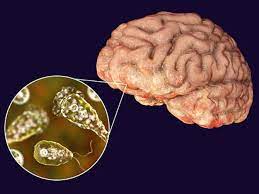
South Korea reported its first case of the rare yet fatal infection – Naegleria fowleri or “brain-eating amoeba”.
Naegleria fowleri:
- It is a single-celled organism which can infect humans.
- It was first discovered in Australia in 1965 and is commonly found in warm freshwater bodies, such as hot springs, rivers and lakes.
- According to the US Centers for Disease Control and Prevention (CDC), with the rising global temperatures.
- The organism best grows in high temperatures up to 46°C and sometimes can survive at even higher temperatures.
- The amoeba enters the human body through the nose and then travels up to the brain. In some cases, it was found that people got infected when they cleaned their nostrils with contaminated water.
- Scientists haven’t found any evidence of the spreading of Naegleria fowleri through water vapour or aerosol droplets.
- Once Naegleria fowleri goes to the brain, it destroys brain tissues and causes a dangerous infection known as primary amebic meningoencephalitis (PAM).
- The first signs of PAM start showing within one to 12 days after the infection. In the initial stages, they might be similar to symptoms of meningitis, which are headache, nausea and fever.
- In the later stages, one can suffer from a stiff neck, seizures, hallucinations, and even coma.
- As the Naegleria fowleri infection is rare and progresses quickly, scientists haven’t been able to identify any effective treatments yet.
Pushpa Kamal Dahal “Prachanda” : Nepal’s New Prime Minister
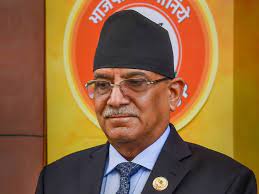
Pushpa Kamal Dahal “Prachanda” was sworn in as Nepal’s new Prime Minister.
- He sworn-in as the Prime Minister of Nepal for a third time, a day after the former guerrilla leader dramatically walked out of the pre-poll alliance led by the Nepali Congress and joined hands with opposition leader K P Sharma Oli.
- The 68-year-old CPN-Maoist Centre chairman was appointed as the country’s new prime minister on Sunday after he submitted a letter to President Bidya Devi Bhandari showing the support of 169 members in the 275-member House of Representatives.
- President Bhandari also administered the oath to other cabinet members of the new coalition government. The new cabinet has three deputy prime ministers – Bishnu Paudel from Oli’s CPN-UML, Narayan Kaji Shrestha from CPN-Maoist Centre and Rabi Lamichhane from Rastriya Swatantra Party (RSP).
Green Methanol Production At a Commercial Scale : NTPC

State-owned power generation company NTPC has recently partnered with Tecnimont to explore green methanol production at a commercial scale.
- The green methanol project involves capturing carbon from NTPC power plants and converting it into a green fuel.
- The objective of the partnership was to demonstrate technologies for firing a higher percentage of Torrefied Biomass in NTPC’s coal fired units, Methanol Firing and Ammonia Firing.
- Green methanol is methanol that is produced renewably and without polluting emissions, one of its variants being generated from green hydrogen.
- It is a low-carbon fuel that can be made from either biomass gasification or renewable electricity and captured carbon dioxide (CO2).
- This chemical compound can be used as a low-carbon liquid fuel and is a promising alternative to fossil fuels in areas where decarbonisation is a major challenge, such as maritime transport.
Official Recognition To E-Sports:

India has officially recognised Esports as a part of ‘multisport event
- The President of India, amended the regulations governing eSports in accordance with the authority “conferred by clause (3) of Article 77 of the Constitution” and requested the Sports Ministry and the Ministry of Electronics and Information Technology to include “Esports as part of multi-sports events.”
- According to a gazette notification, E-Sports will now be a part of the “multisports event” category in India. E-Sports will be taken care of by Department of Sports under the Ministry of Youth Affairs and Sports.
- Meanwhile, ‘Online Gaming’ will be under MEITY (Ministry of Electronics and Information Technology).
- E-Sports, short for electronic sports, is a form of competition using video games.
Amrit Bharat Station Scheme: Objective

Ministry of Railways has recently formulated a new policy for modernization of stations named “Amrit Bharat Station” scheme.
- Amrit Bharat Station scheme envisages development of stations on a continuous basis with a long term vision.
- The scheme will subsume all previous redevelopment projects where work is yet to begin.
- The scheme aims at preparation of Master Plans of the Railway stations and implementation of the Master Plan in phases to enhance the facilities including and beyond the Minimum Essential Amenities.
- However, plans and consequent budgets will only be approved on the basis of factors such as footfall and inputs from stakeholders.
- Zonal railways have been given the responsibility of selecting stations, which will then be approved by a committee of senior railway officials.
- The model envisages low-cost redevelopment of stations which can be executed timely.
- The scheme also aims to relocate redundant/old buildings in a cost efficient manner so that space is released for higher priority passenger related activities and future development may be carried out smoothly.
- Objectives:
- Provision for Roof Plaza to be created in future
- Free Wi-Fi, space for 5G mobile towers
- Smooth access by widening of roads, removal of unwanted structures, properly designed signages, dedicated pedestrian pathways, well planned parking areas, improved lighting etc.
- High level platforms (760-840 mm) at all stations with a length of 600 metres
- Special amenities for the disabled




